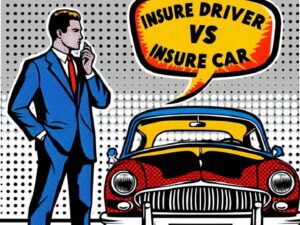Winter is coming: Are your clients prepared?

For some parts of the US and Canada, these conditions are already taking their toll. Winter dealt Buffalo and other parts of western and upstate New York their first harsh blow of the year in late November, with an historic lake-effect storm that dumped up to 80 inches of snow in some areas.
Here’s a preliminary 5-day storm total snowfall map for November 16-21, 2022. Thanks to NWS Albany for developing the map, and to the spotters and observers who took snowfall measurements during this historic lake effect event. pic.twitter.com/0m8twvnn2L
— NWS Buffalo (@NWSBUFFALO) November 22, 2022
“Understanding the dynamics of what’s happening around us is so important,” said Steve Hernandez (pictured), senior vice president, global risk control, CNA Insurance. “When talking about winter weather with clients, you have to discuss the weather patterns that are happening – whether it’s El Nino or La Niña – and how they’re amplified by the effects of climate change.
“Climate change is not going away. So, what does that mean in terms of business resiliency when talking to policyholders about winter weather risks?”
Winter weather hazards that brokers should be discussing with clients
Proper winter hazard preparation is an essential part of a business resiliency program, according to Hernandez. He explained four winter weather hazards that all agents and brokers should be discussing with their business clients:
Fleet risks
Winter weather presents a unique set of risks for drivers. Temperatures can swing in a matter of hours in certain geographies, precipitation or snow melt can freeze and cause icy conditions, and short daylight hours combined with overcast skies can dramatically reduce visibility on the roads.
“It really does require advanced planning, employee training, and a little technology to help prepare for the winter months,” said Hernandez, who shared the following tips to protect vehicles:
Make sure that all vehicles have a road safety kit.
Conduct a winter weather vehicle inspection, where you look at the condition of the vehicles, tires, brakes, lights, etc.
Make sure that all vehicle safety features are operating properly.
Park vehicles in a garage if there is going to be a severe storm in order to limit the potential physical damage.
“Route driving and planning is extremely important in the winter months, [considering] weather conditions during or in anticipation of a driving shift,” Hernandez added. “Driver behaviors and driver training during winter should both really take precedent, as things like stopping distance are very different in bad winter conditions than in normal driving conditions. There’s been a lot of work done around telematics, which can provide real-time driver insights and coaching. When you have a shift in weather patterns – [and the risk of poor driving conditions] – it’s a good time talk through all of this with fleet operators.”
Slips and falls / snow removal
Wintery weather inevitably brings about an increase in slips and falls, and Hernandez said it’s important for building owners to remember their legal responsibility (often state mandated) to mitigate or remove snow and ice-related walking hazards on their property to protect the general public.
“In the era we’re operating in today, where businesses have re-opened post-pandemic, and the workforce and members of the public are out and about, it’s good for [agents and brokers] to remind policyholders they’ve got a responsibility as a business to maintain their facility, and the jurisdiction they’re in is also going to potentially influence that [risk mitigation]’,” said Hernandez.
The CNA risk control expert said businesses should have a slip and fall program that includes:
Protocols around the equipment required for snow and ice removal, and the surface treatment;
Who is designated to clear treat and monitor the walking surfaces;
When you are going to execute on mitigation – two inches of snow is standard;
Labor – whether you will do it yourself or subcontract snow removal – and when subcontracted, having the right risk transfer protocols in place; and
Documentation for all of the above.
“In extreme cases like the November snowstorm in Buffalo, where more than 70 inches of snow fell in a 48-hour period, businesses need to consider how they would remove all of that snow,” Hernandez said. “What’s the strategy? There’s a combination of surfaces that need clearing – walkways, parking lots, even roofs may struggle with the snow load. Who is going to do that work – employees, or are you going to contract it out? What are the safety and risk transfer protocols? How is that documented?”
BUFFALO: >30 major roof collapses due to the weight of the snow; 3X many minor roof collapses. http://t.co/6mKPdxmaCh pic.twitter.com/nXBsu3D3V1
— Bill Stephan (@MetropForensics) November 22, 2014
“When you get that much snow [like Buffalo], where are you going to put it on your property?” Hernandez added. “You don’t want to load the snow on higher ground because when it melts, it could run down to the flat parking lot and freeze overnight. So, you’ve got to consider elevation, you’ve got to look at drainage, and then also ensure that the right safety measures are taken if employees are removing snow and clearing drains.”
Cold stress
Cold stress typically depends on the nature of the business. Those with workforces that operate outside or in cold environments are particularly exposed, and should follow strict protocols around the following:
The equipment that employees use;
Cold weather clothing;
Employee training;
Employee selection (shift work);
Monitoring working conditions; and,
Ensuring proper breaks are provided.
“That doesn’t necessarily mean the workforce is out in the field outside. If you’re asking employees to remove snow and ice from the property in conditions that are below freezing, they’re going to be exposed to cold stress,” Hernandez noted. “We probably spend more time talking about heat stress to workers than we do cold stress, but in certain conditions and locations, that cold exposure is just as much of an exposure.”
Unheated areas in buildings
Some facilities have areas within their occupancy that are very exposed to cold, which can lead to employee or operational cold stress if not dealt with properly.
“Areas like loading docks with doors that might be open for an extended period of time [can expose the workplace to freezing conditions], and sometimes they don’t realize those areas are unheated,” said Hernandez. “We’ve seen a lot of work done around IoT technology to monitor [and mitigate] those kinds of conditions.”




